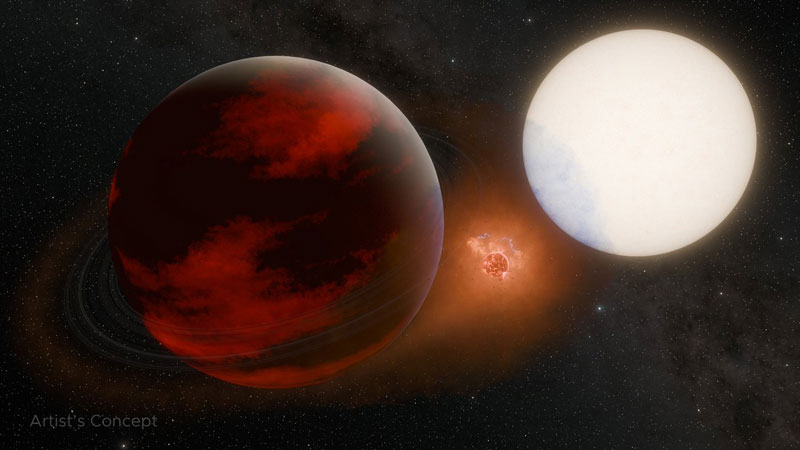To date, there is not a single confirmed discovery of an exomoon – there are only a few candidates for the role of satellites of distant exoplanets. All the more valuable is the discovery made by astronomers, which may become the first discovery of an exomoon similar to Jupiter’s volcanic satellite Io. This satellite may orbit the exoplanet WASP-49b, which is 635 light years away from Earth. However, new observations are needed to firmly prove this fact.

Artistic representation of an exoplanet, exomoon and star. Image source: NASA
NASA scientists discovered something unusual in the behavior of the planet WASP-49b, a gas giant the size of Saturn, back in 2017. Recently, while already an employee of the California Institute of Technology, former NASA scientist Apurva Oza, along with colleagues from the Southern European Observatory and other researchers, re-examined the behavior of the distant system. Planet WASP-49b completes one revolution around its star in 2.8 days. From time to time, a sufficiently large cloud of sodium was detected near a planet and a star, which could be studied as an independent object.
Long-term observations have not made it possible to link the sodium cloud to any region of the exoplanet. It was also not associated with a star and had no explainable ejection mechanisms from the star or the exoplanet itself, whose atmospheres are dominated by hydrogen and helium. Moreover, the dynamics of the cloud’s movement indicated that it was moving above the planet at a distance 1000 times its radius. The measurements also showed that to maintain a sodium cloud of detectable density, it would need to be ejected at a rate of 100 tons per second.